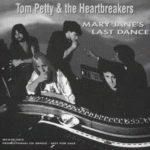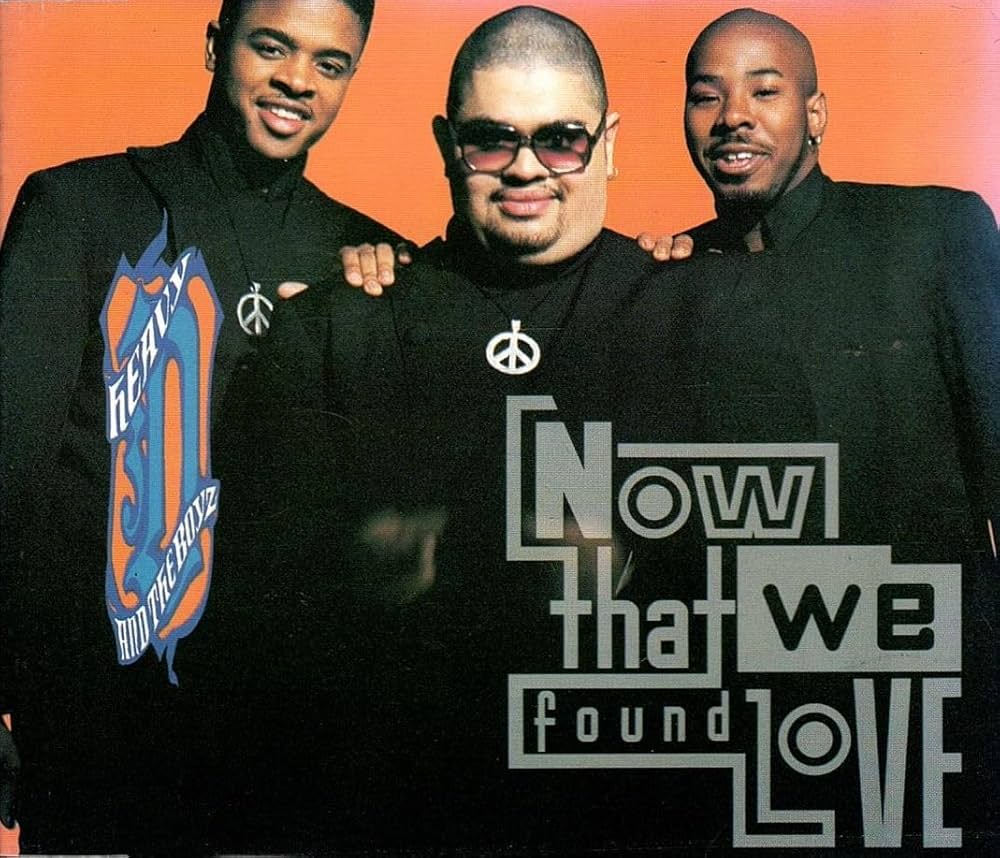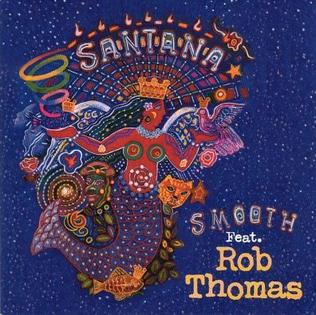 Some songs feel like they were born with a sunset in their veins — glowing, bittersweet, and impossible to forget. Tom Petty’s “Mary Jane’s Last Dance” is one of those. Released in late 1993 on Greatest Hits, it wasn’t originally meant to become a cultural milestone. Yet the song’s mysterious blend of longing, loss, and liberation turned it into one of Petty’s defining works. It bridged his classic ‘70s rock roots with the restless spirit of the early ‘90s alternative scene, giving his career a fresh surge of relevance just when many legacy artists were fading into nostalgia.
Some songs feel like they were born with a sunset in their veins — glowing, bittersweet, and impossible to forget. Tom Petty’s “Mary Jane’s Last Dance” is one of those. Released in late 1993 on Greatest Hits, it wasn’t originally meant to become a cultural milestone. Yet the song’s mysterious blend of longing, loss, and liberation turned it into one of Petty’s defining works. It bridged his classic ‘70s rock roots with the restless spirit of the early ‘90s alternative scene, giving his career a fresh surge of relevance just when many legacy artists were fading into nostalgia.
More than three decades later, “Mary Jane’s Last Dance” endures not just as a radio staple, but as a sonic elegy — a reflection on fading youth, fleeting love, and the melancholic beauty of letting go. It’s both a farewell and a resurrection, a song that feels alive every time it spins on classic rock radio, whispering its cryptic poetry through Petty’s weathered voice and Mike Campbell’s swampy guitar riff.
The Sound of a Final Embrace
“Mary Jane’s Last Dance” begins with that unmistakable riff — a lazy, bluesy slide guitar lick that slithers into your subconscious and sets the tone for what’s to come. It’s sultry and humid, almost Southern Gothic, painting an image of dusty roads and neon-lit bars at closing time. The groove is mid-tempo and hypnotic, carried by a rhythm section that feels both languid and insistent.
Tom Petty had always been a master of crafting songs that live in motion — the sense that something’s just about to happen, or that something’s just slipped away. Here, he channels that duality perfectly. The song’s structure feels deceptively simple: verses that drift like smoke, choruses that hook into your brain with quiet power, and a harmonica line that sounds like the wind sighing through a graveyard of memories.
Petty’s vocal delivery is what anchors it. He doesn’t belt or croon — he narrates. His tone is wistful yet knowing, as though he’s seen too much to be surprised anymore. Every syllable is imbued with that uniquely Petty mix of charm and resignation.
“Last dance with Mary Jane, one more time to kill the pain…”
It’s one of rock’s great double entendres. Mary Jane — marijuana — could easily be the subject, sure. But it’s just as easy to hear the lyric as an ode to a lost lover, a metaphor for youth itself, or even a farewell to innocence. Petty, ever the trickster-poet, never clarified it, leaving fans to draw their own meanings.
The Lure of Ambiguity
Part of what makes “Mary Jane’s Last Dance” so fascinating is its refusal to be pinned down. On paper, it’s simple: a man remembering a woman who may or may not have left town, left his life, or left this world. But like so many great rock songs, it’s what’s unsaid that makes it haunting.
Is it about death? Addiction? Lost love? Rebirth? Maybe all of the above. The lyrics — “There’s pigeons down on Market Square / She’s standing in her underwear” — conjure vivid, cinematic imagery without context, like snippets from a dream. It’s a song of fragments, and that’s its magic.
Tom Petty came of age in a musical era that prized narrative storytelling — think Springsteen or Dylan — but “Mary Jane’s Last Dance” works more like a mood piece. It’s emotional collage. It captures not a story, but a feeling: that heavy, sweet ache of knowing something beautiful has passed and can’t come back.
When the chorus returns again and again, it feels like an incantation — a mantra to numb the ache of loss. “One more time to kill the pain.” It’s that universal human ritual: the final glance backward before moving on.
The Music Video That Became Legend
No discussion of “Mary Jane’s Last Dance” is complete without the unforgettable music video. Directed by Petty’s longtime collaborator Steve Golin, it’s one of the most haunting visuals in rock history — and one of the strangest.
The video stars Petty as a morgue attendant who becomes infatuated with a beautiful corpse, played by Kim Basinger. He steals her body, dresses her up, and dances with her through candlelit rooms before finally letting her drift out to sea. It’s both macabre and heartbreakingly romantic, an eerie metaphor for clinging to something that’s already gone.
Petty later admitted that the video was inspired by the song’s themes of loss and obsession — and also by his own weariness with fame. In many ways, it can be read as a reflection of an artist trying to preserve the past, to hold onto beauty that time insists on taking away.
Critics were divided when it aired on MTV. Some called it darkly brilliant; others, deeply disturbing. But like the song itself, the video endures precisely because it makes you uncomfortable. It captures the same uneasy beauty that runs through the track — the blurred line between love and death, nostalgia and decay.
Reinventing Relevance in the ‘90s
By the early 1990s, Tom Petty & The Heartbreakers were already icons. Their run from Damn the Torpedoes (1979) through Full Moon Fever (1989) had solidified their place in rock history. But “Mary Jane’s Last Dance” was something different.
Recorded during sessions for Wildflowers but released as a new track on Greatest Hits in 1993, it was meant to be a bonus song — a gift for fans. Instead, it became a massive hit. It reached #14 on the Billboard Hot 100 and #1 on the Mainstream Rock chart, proving that Petty’s music could thrive in the grunge-dominated ‘90s without pandering to trends.
At a time when alternative rock ruled the airwaves — Nirvana, Pearl Jam, Smashing Pumpkins — Petty managed to sound timeless and current all at once. “Mary Jane’s Last Dance” fit perfectly alongside those acts: its smoky melancholia, cryptic lyrics, and dark edge made it feel just as relevant as anything on modern rock radio.
For younger listeners discovering Petty for the first time, it was an introduction. For long-time fans, it was a reminder that their hero wasn’t done yet. The song reinvigorated his career, setting the stage for his acclaimed 1994 solo album Wildflowers — another masterpiece of quiet introspection and emotional rawness.
The Spiritual Cousin of “American Girl”
Listening to “Mary Jane’s Last Dance,” it’s impossible not to hear echoes of “American Girl,” the breakout hit that started it all. Both songs revolve around a woman who represents freedom, loss, and mystery. Both pulse with restless energy and bittersweet melancholy. But where “American Girl” is about beginning — the wide-eyed dreamer standing on the edge of adventure — “Mary Jane’s Last Dance” is about ending. It’s the other side of the journey.
If “American Girl” is the bright morning of youth, “Mary Jane’s Last Dance” is twilight. It’s Petty looking back on the road he’s traveled, acknowledging what’s been lost along the way. The two songs feel like bookends to a life — exuberance on one side, elegy on the other.
The Enduring Power of the Hook
Part of what makes “Mary Jane’s Last Dance” so immortal is how effortlessly it sticks in your head. That chorus — simple, repetitive, drenched in bittersweet resignation — feels like something that’s always existed.
Petty’s genius was in writing songs that felt both inevitable and fresh. Like “Free Fallin’,” “Learning to Fly,” and “I Won’t Back Down,” this one walks the fine line between rock anthem and folk hymn. It’s instantly recognizable, yet endlessly replayable.
And Mike Campbell’s guitar work deserves its own paragraph of praise. His slide tone on this track is pure magic — sultry, melodic, and subtly menacing. Campbell’s style had always been about serving the song, not showing off, and “Mary Jane’s Last Dance” might be his finest hour. His riffs breathe life into the song, making it feel simultaneously intimate and cinematic.
A Song That Grew in Meaning
Since its release, “Mary Jane’s Last Dance” has taken on deeper layers of meaning, especially after Tom Petty’s passing in 2017. When fans hear it now, the sense of finality in the lyrics feels prophetic. “One more time to kill the pain” hits differently when the voice singing it is gone.
At Petty’s concerts, the song was a highlight — a mid-set groove that always seemed to take the audience somewhere else entirely. You could see thousands swaying in unison, mouthing the lyrics, lost in the spell of that hazy riff. It wasn’t just nostalgia — it was communion.
After his death, radio stations across the country spun “Mary Jane’s Last Dance” as a tribute, and fans posted the song’s title as a kind of epitaph. It became shorthand for farewell — one last dance before the lights go out.
Legacy and Timelessness
Today, “Mary Jane’s Last Dance” remains one of the most played songs on classic rock radio. Its influence has seeped into countless artists — from the Black Keys and Kings of Leon to Lana Del Rey and the War on Drugs. Its smoky sensuality and cryptic poetry have become part of the American rock DNA.
But its greatest legacy lies in its ambiguity. It’s a song that means different things to different people — a breakup anthem, a stoner ballad, a midlife reflection, a dirge for lost youth. It’s all of those things at once, and that’s what keeps it alive.
Petty once said he liked songs that “leave some room for the listener to fill in the blanks.” “Mary Jane’s Last Dance” is exactly that. It’s a blank canvas painted in twilight hues, where anyone can project their own story of love, loss, and release.
The Last Word
“Mary Jane’s Last Dance” isn’t just a song — it’s a feeling, a farewell that never fully ends. It captures the paradox of Tom Petty himself: the heartland poet with a rebel’s grin, the dreamer who never stopped moving forward but always looked back with tenderness.
Every generation rediscovers this song and finds something of themselves in it. That’s the mark of true rock immortality — when a song stops belonging to the artist and becomes part of the listener’s emotional landscape.
For Tom Petty, “Mary Jane’s Last Dance” was both an ending and a beginning. For the rest of us, it’s a reminder to hold on a little longer, love a little harder, and dance — one more time — before the curtain falls.


